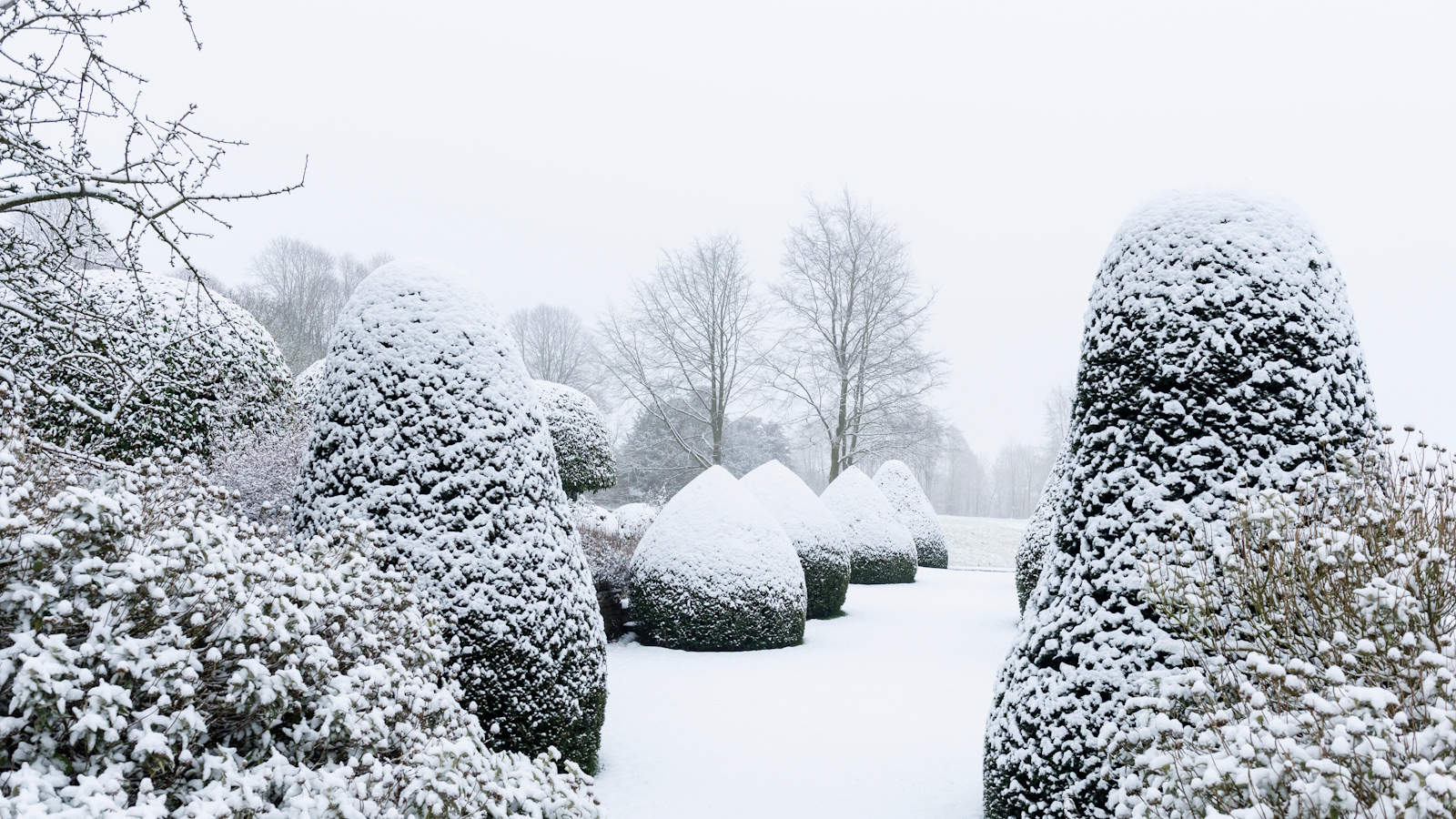
Keeping plants safe during winter needn't be expensive. There are several cost-effective and cheap ways to protect plants from frost and snow, all of which I have used in my career as a professional gardener. With a little creativity, you can reuse and repurpose household items to safeguard your garden from the worst of the weather, all without breaking the bank.
When working as a professional gardener in London, South Wales and Tuscany, I battled against many freezing winters and challenging conditions. Besides hiding in the shed with a cup of warm coffee, protecting plants was an important task.
So, if you are wondering how to protect plants from frost, here are four cost-effective and easy options. While they might not win any style awards, these solutions can be quickly deployed when threatening weather moves in.
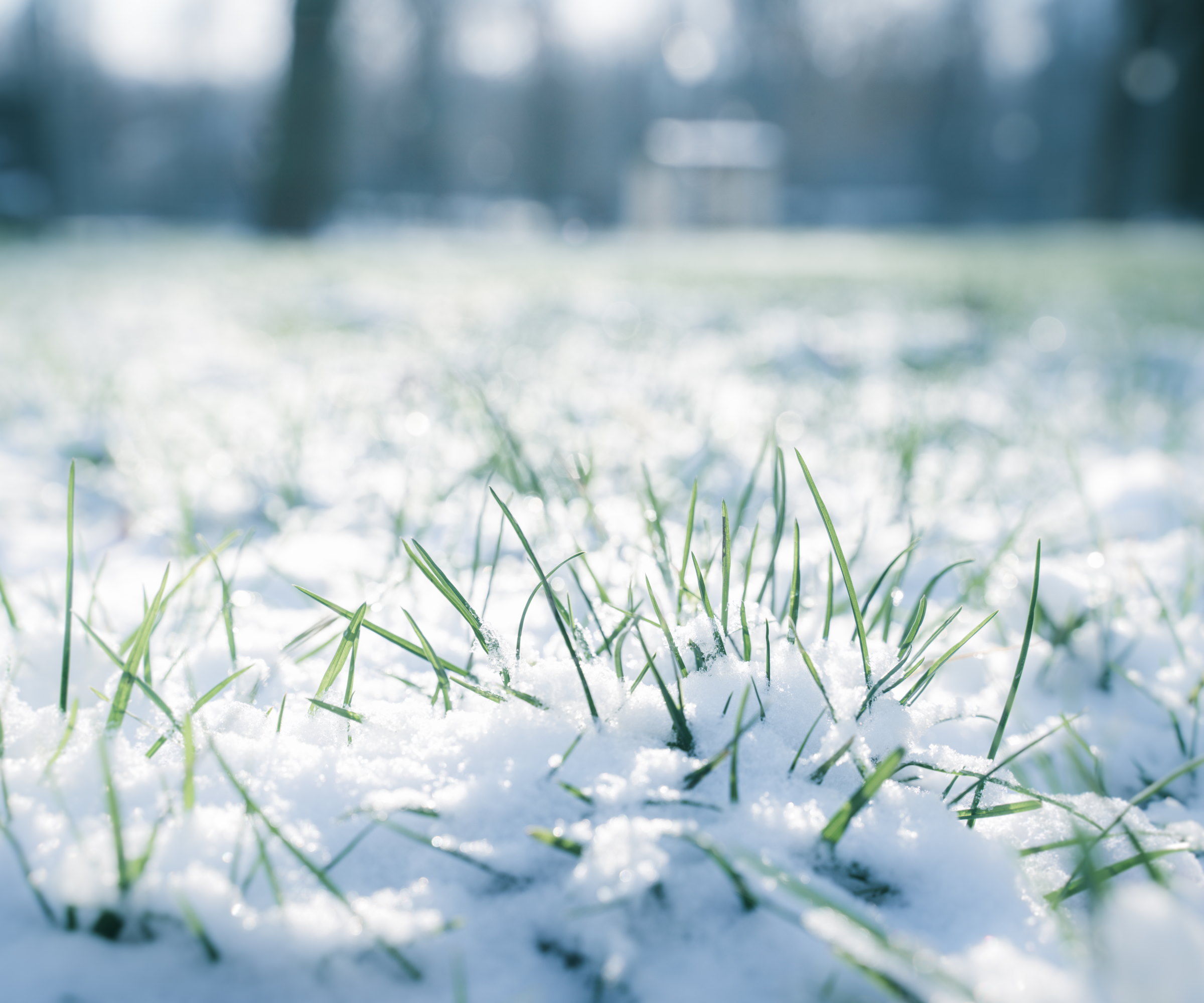
Cheap ways to protect plants from frost and snow
When to cover plants for frost will depend on where you live, your US hardiness zone and what you grow. Gardeners tend to begin protecting plants when the temperature nears 10°C/50°F, but many species can handle the mercury dipping even lower. For example, rose of Sharon shrubs, Hibiscus syriacus, can handle winter weather down to -20°C/-4°F, proving to be a hardy option for gardeners in cooler zones.
However, there are sure to be some plants that require a degree of protection in your yard, including tender and tropical species and newly planted trees and shrubs. The following four solutions are budget-friendly ways to protect plants from frost, helping you to avoid irreparable damage and disappointment.
1. Repurposing old fabric and sheets
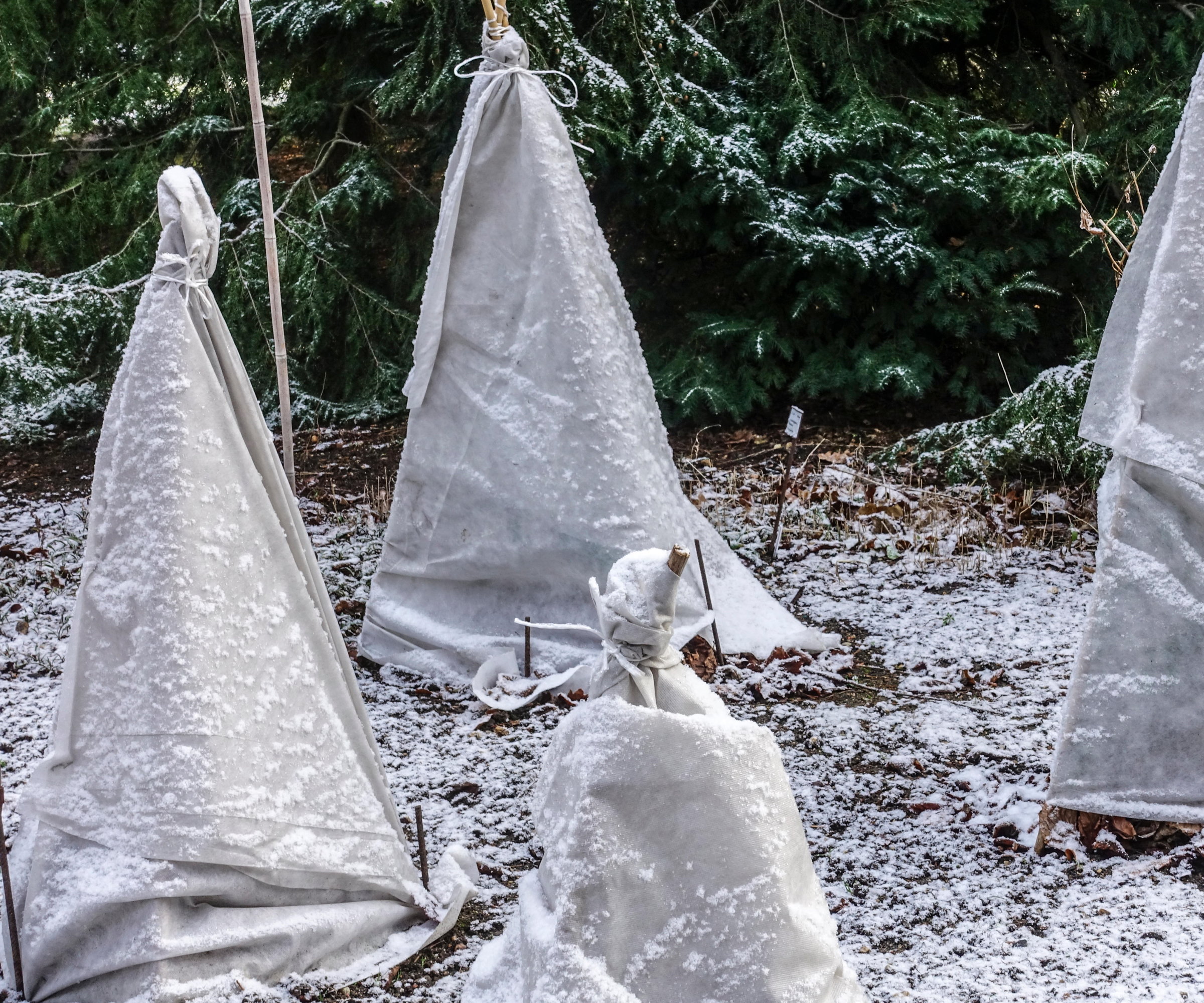
Using a frost cloth for plants is one of the most cost-effective ways to protect plants from frost. Put simply, covering plants with old bedsheets, blankets, or even cardboard boxes ahead of a cold snap will help to keep frost and snow away from the crown of your plant and minimize damage.
While you can use purpose-made plant frost cloths, any old material you have in the shed, garage or attic will do. All that is needed is to drape the material over your plants during frosty periods.
For smaller plants or shrubs, you might need to use bamboo canes to build a tent-like structure, as you can see in the image above. I would also recommend using metal pegs, available from Amazon, to secure the fabric to the ground. In my experience, windy weather can quickly lift insecure fabric that will easily take to the skies.
Plants will be just fine if covered for a week or so during snowy weather, but remove the material when you can. Too long under warm, humid covers can invite rot or pest damage.
'This quick method can be used when learning how to protect palm trees in winter,' says Tatiana Anderson, tropical plant expert and co-founder of Top Tropicals.
'For tender or tropical palm species, wrap them in burlap or blankets, lifting the fronds upwards and covering the crown of the plant,' Tatiana adds. 'I would always advise against using plastic sheets, however, as they can trap moisture and cause damage.'
2. Mounding plants with homemade mulch
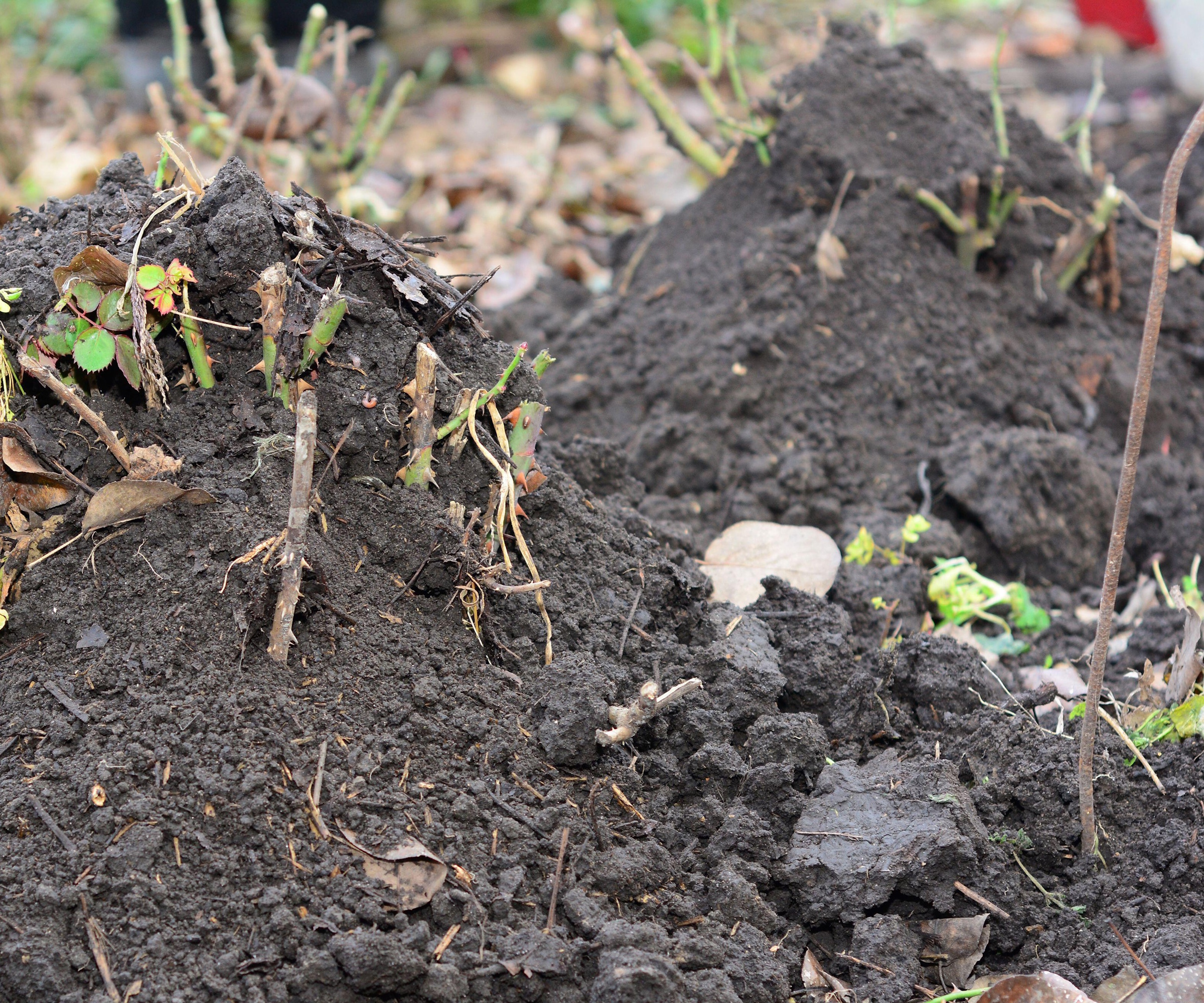
Mulching is an important job that you might already have on your fall or winter gardening checklist. What you might not know is that creating a mulch mound over the base of plants is a tried and tested technique for protecting plants from frost.
This approach is most common when learning how to winterize roses, as you can see in the image above. If you have homemade mulch or compost, this free resource can be used to simply add a thick layer to the base of your rose plants, helping to lock in heat and prevent the soil from freezing. The soil or mulch can be pulled back in the spring, and evenly spread around your border.
Mulch mounding can also be used for tender perennials or young shrubs that have only recently been planted. Even four to six inches of added soil or mulch will keep the crown and roots of your plants from freezing during chilly winter nights.
'This approach can also be used when learning how to protect avocado trees in winter,' says plant expert, Katie Sunderlage. 'For avocados or other tender trees, simply add a thick mounding layer around the trunk, helping to insulate the base of the tree. Keep this to a six or eight-inch depth, spreading when the weather improves.'
This plant frost cloth can be quickly and easily wrapped around shrubs and trees to protect them during snowy weather.
Garden twine is a natural product to use that can help when tying frost sheets and blankets in place during winter.
Ideal for smaller shrubs in pots, these smart winter covers have a zip making them easy to use.
3. Reusing old pots, jars and buckets
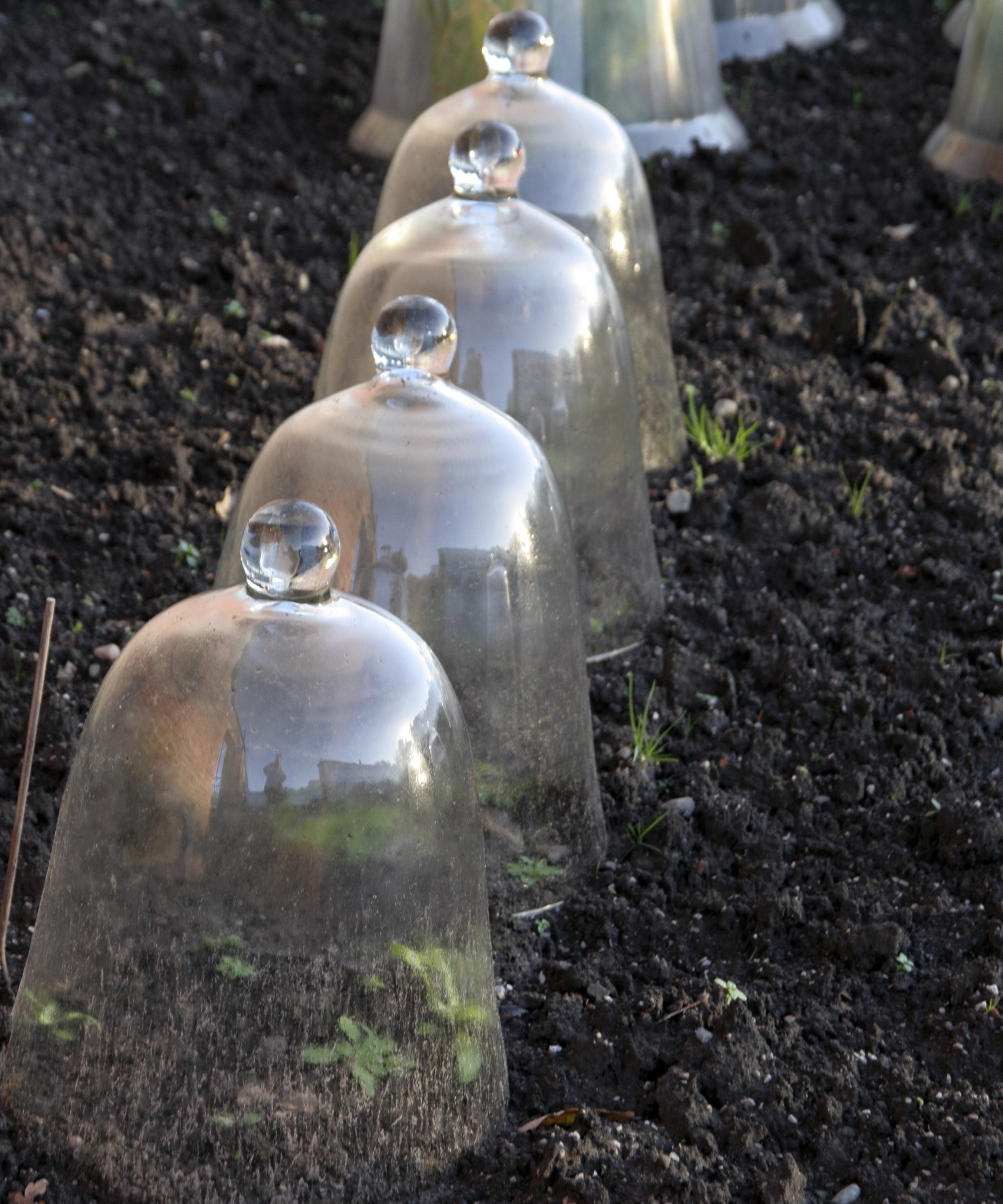
You will undoubtedly have lots of essential gardening tools and accessories in your shed, and some of these might prove useful when looking for cheap ways to protect plants from frost. While glass vessels or cloches, as seen above, are the most aesthetically pleasing, sometimes gardening needn't be pretty, so long as it gets the job done.
Old terracotta pots, cracked plastic containers, or even unused buckets can be repurposed to cover plants ahead of snowfall. While this is only suitable for smaller plants, simply placing an upturned pot or bucket will keep them safe. Just be sure to add a stone or brick to any lightweight objects to stop them from blowing away.
I would suggest removing these covers during the day to prevent overheating and to allow sunlight to pass through, and returning them to the shed once the risk of frost and snow has passed.
4. Using straw as a frost covering
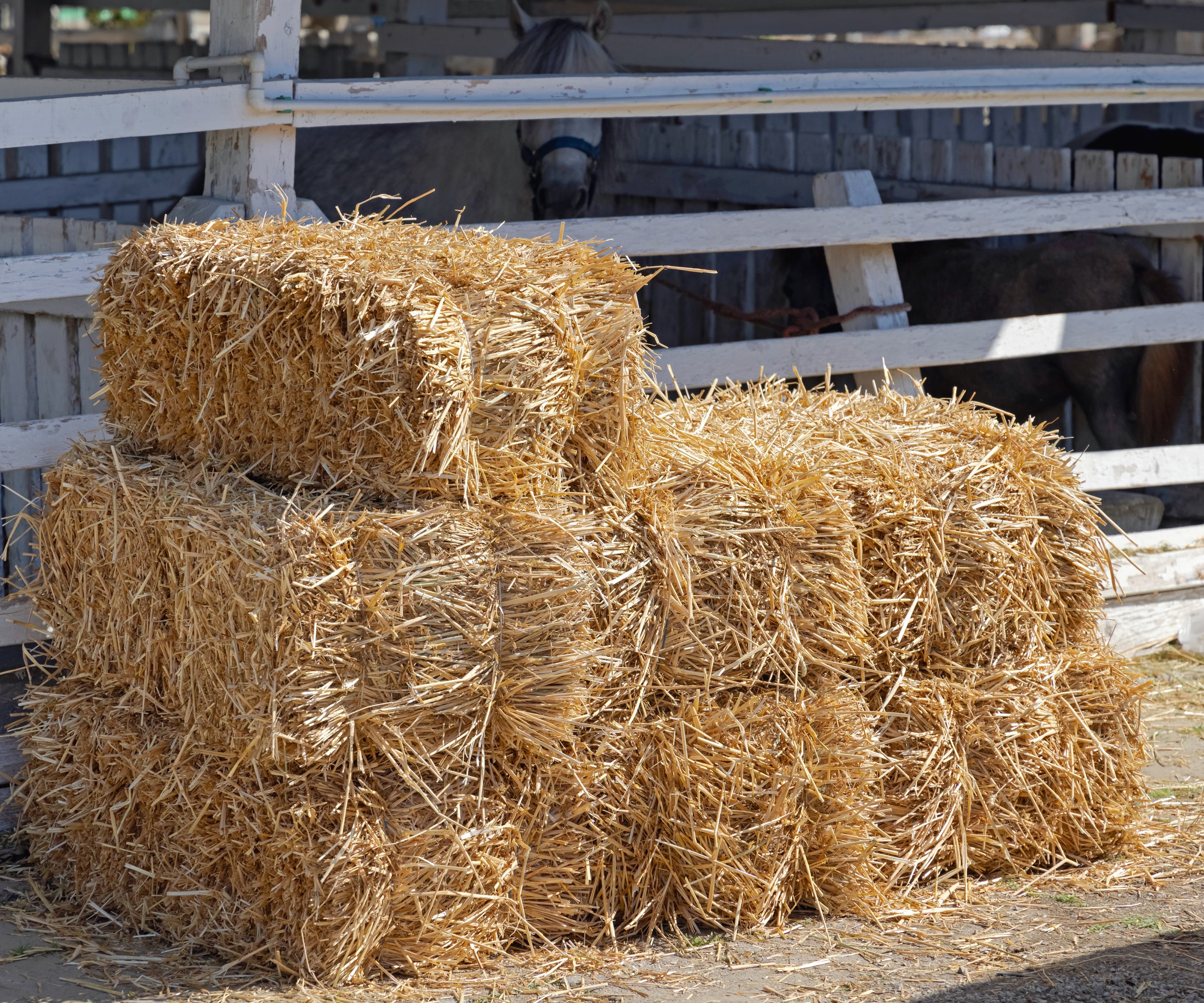
Much like using mulch to protect plants in winter, straw is another cost-effective and versatile option if you are worried about frost and snow. You might have some sacks or bales of straw in the garden that can be used, or alternatively, garden straw is available to order from Amazon.
You can either use straw bales to create a windbreak around tender plants or use loose straw to create a natural insulating layer over borders. If you are mounding over roses or other shrubs, it might be a good idea to secure straw in place with garden twine, to provide some stability during stormy weather.
Come spring, you can compost this straw or use it as a mulch at the back of your yard, helping to enrich your soil for the growing season ahead.
FAQs
What does frost damage look like?
Frost damage is easy to spot on plants. Heavy snow or hard frosts can blacken foliage and stems, giving an almost burnt appearance. Often, damaged foliage and stems can be removed and are nothing to worry about. If the crown or base of the plant appears rotten, blackened or mushy, however, this can mean irreparable damage to your plant.
Can I use tarp to protect plants in winter?
Tarp can be used to cover plants during periods of frost and snow, but keep in mind this is best treated as a short-term solution. Plastic sheeting can cause moisture to build up in the crown of the plant, leading to rot or freezing damage when temperatures drop. Remove plastic covers during the day to allow proper ventilation, and remove them entirely as soon as the temperature increases.
Reusing and repurposing materials and equipment around the house are clever and cheap ways to protect plants from frost. So, before you get rid of old pillowcases, bed sheets, blankets, or even curtains, store them in your shed for the years ahead.
For more winter garden information, see our guide on how to protect fruit trees from frost, to keep your citrus, apple and plum trees safe this year.







